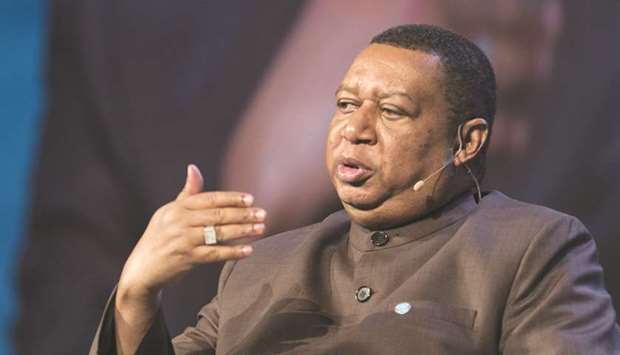Oil erased losses in New York after the initial reaction to US President Donald Trump’s tweet on “artificially Very High” prices fizzled.
The comments came as the Organisation of Petroleum Exporting Countries (Opec) and allies including Russia showed willingness to further tighten oil markets and boost prices in a meeting in Saudi Arabia. West Texas Intermediate futures dropped as much as 1.2% before the losses were erased.
“Looks like Opec is at it again,” Trump said on Twitter. “With record amounts of oil all over the place, including the fully loaded ships at sea, oil prices are artificially Very High! No good and will not be accepted!”
Oil ministers from Saudi Arabia, Russia and the United Arab Emirates pushed back on the charge, saying there’s no such thing as artificial prices, that current market levels reflect geopolitics and that demand is strong. Crude has rallied in recent weeks as output cuts from Opec and its allies were compounded by heightened geopolitical risks, including the possibility of renewed US sanctions on Iran. US shale producers are also facing production challenges.
“Those goals Opec set out are nearly achieved,” said Katie Bays at Height Securities LLC. “I don’t see how the president’s position necessarily will weigh in on that at all.”
Meeting in Jeddah, a committee of Opec and other oil producers found high levels of compliance with the production curbs. Still, there’s capacity for prices to rise beyond this week’s three-year high, according to Saudi Energy Minister Khalid al-Falih, who said co-operation between producers would continue into 2019.
Russian Energy Minister Alexander Novak said the output deal has stimulated US oil production and helped “restore the industry of Texas.” Opec secretary-general Mohammad Barkindo said the US oil and gas industry is benefiting from the group’s efforts to stabilise the market.
US crude production was at 10.5mn barrels a day last week, up from 9.3mn barrels a day a year ago, according to government data, with growth rates meaning it may surpass top producers Saudi Arabia and Russia.
WTI for May delivery erased losses to trade 3¢ higher at $68.32 a barrel as of 12:25pm in New York. That contract expires on Friday. WTI has risen 10% in two weeks.
Brent crude for June delivery fell about 69¢ at the time of the tweet, before trading just 4¢ lower at $73.74 a barrel in London. Both benchmarks are set for weekly gains.
President Trump’s comments come in the same week that US oil inventories fell below their five-year average for the first time since 2014 as Opec policy of curtailing production appears to be close to achieving its stated goal. Brent moved to almost $75 a barrel on Thursday, its highest level in more than three years.
Opec’s not the only reason why oil prices have moved higher.
Fears that Trump will re-impose sanctions on Iran when the nuclear deal is reviewed are adding to uncertainty and could halt as much as 800,000 barrels a day of exports from Opec’s third-largest producer within six months. Venezuela’s economic meltdown and plunging production has also hit supplies.
US shale, the big growth driver of the last three years, is also facing some “production challenges,” Paal Kibsgaard, chief executive officer of Schlumberger Ltd, the world’s biggest provider of oilfield services, said yesterday. Shortages of pipelines, labour, equipment and sand is threatening to curtail growth.
Twitter has emerged as a preferred medium of communication for Trump, allowing him to directly reach his 51mn followers and countless more through news coverage.
On April 2, Amazon.com Inc shares dropped after Trump said the company’s deliveries cost the postal service and drive retailers out of business.

Opec secretary-general Mohammad Barkindo says the US oil and gas industry is benefiting from Opec’s efforts to stabilise the market.


